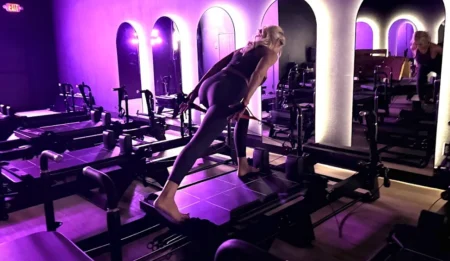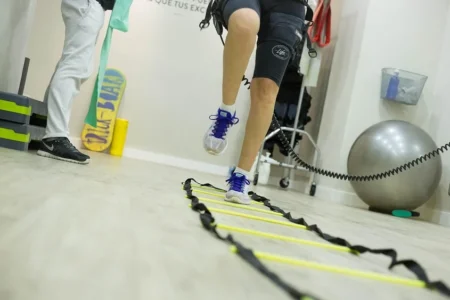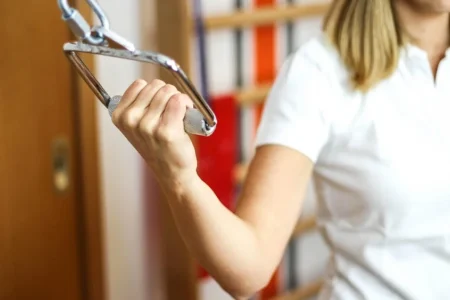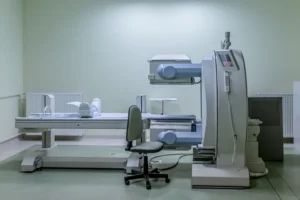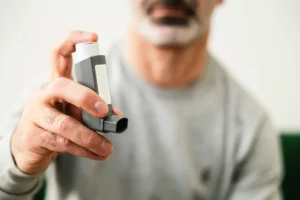From Rehab to Resilience: How Pilates Supports Recovery and Strength
- Updated on: Jul 8, 2025
- 4 min Read
- Published on Jul 8, 2025
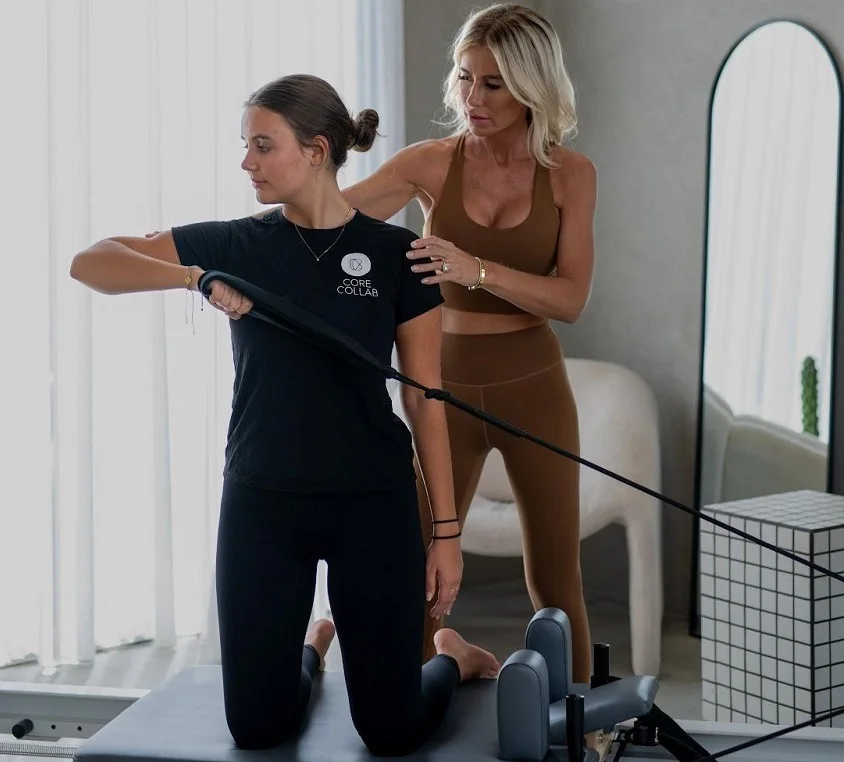
When you’re recovering from an injury or managing ongoing pain, it’s easy to feel stuck. You might want to rebuild your strength, but high-impact workouts feel too risky. You may be eager to move again, but don’t know where to start without aggravating something.
That’s where Pilates comes in. This low-impact, controlled form of exercise gives you the structure and support you need to rebuild trust in your body. Whether you’re post-surgery, managing a chronic condition, or slowly easing back into movement, Pilates can guide your recovery and help you feel strong again. It encourages mindful movement and supports your physical and emotional resilience through every phase of your healing.
Rebuilds Strength One Controlled Movement at a Time
Pilates doesn’t rush you. It focuses on small, purposeful movements that engage your muscles deeply, even when the exercise looks simple from the outside. You aren’t trying to max out your reps or hit a timer. Instead, you’re paying attention to your form, your breath, and how each part of your body is working.
This kind of deliberate pacing builds strength gradually but effectively. You might start with gentle bridges or footwork on a reformer. With consistency, these exercises start to restore muscular endurance and coordination without overstressing your system. You feel progress through control, not exhaustion.
As your strength grows, you’ll also notice better posture and smoother transitions between movements, key indicators of functional strength that translate into everyday life.
Restores Balance Through Core-Focused Work
Your core plays a major role in how you move, stabilize, and function throughout the day. Weakness or imbalance in this area often leads to overcompensation in other areas, which can trigger pain or slow recovery.
Pilates brings your core back into the conversation. Rather than isolating it through crunches, it integrates your deep abdominal and spinal muscles into full-body movements. Over time, you learn how to stabilize through your center—improving how you sit, stand, and walk. Restoring this connection doesn’t just strengthen your body; it makes movement feel smoother and more aligned. A strong, well-coordinated core helps everything else move better, from your limbs to your breath.
Supports Your Healing With Gentle, Guided Motion
One of the best parts about Pilates is how adaptable it is. You can modify almost every exercise based on your ability, pain level, or stage of recovery. Whether you’re working with a physical therapist or following a home program, the goal remains the same: move gently, but move often.
Using a reformer machine can enhance this experience. The smooth-gliding carriage, adjustable springs, and cushioned surface allow you to move through low-impact exercises with confidence.
The Core Collab offers a range of Pilates reformer machines designed for both studio and at-home use, giving you access to professional-grade equipment as you build back your strength. You control the intensity and pacing, which helps you stay consistent without fear of setback. You’ll find that even on days when your energy is low, a short, supported session can help you reconnect to your body and stay on track with your recovery.
Improves Stability Without Straining Your Joints
If your joints have taken a hit—through injury, surgery, or wear and tear—traditional workouts can feel overwhelming. Pilates offers a better option. You use springs, straps, or your own body weight to create resistance without compressing your joints.
That means you can work on balance and coordination without the pounding that often comes with running or jumping. You focus on alignment, range of motion, and support. The result is improved joint function, better muscle engagement, and less pain during and after your workouts. Over time, this joint-friendly approach not only prevents further injury but also builds lasting stability and confidence in your movement.
Strengthens Muscles Without Impact or Pressure
You don’t need to lift heavy weights or endure high-impact circuits to feel stronger. Pilates offers a quieter kind of challenge, one that emphasizes body awareness and muscular endurance.
Exercises like leg circles, foot presses, and arm pulls on the reformer activate multiple muscle groups at once. The resistance is controlled, the pace is steady, and your body stays supported. This helps you build lean strength that supports your posture and daily function, rather than bulking up or overloading specific areas.
If you’re using a machine, you’ll notice how smooth the movements feel, even when you’re working hard. Their reformers offer adjustable springs and an ergonomic design, allowing you to progress gradually without feeling restricted. Whether you’re training in a home studio or professional setting, this equipment helps create a stable foundation for building strength safely and sustainably.
Builds Confidence in Your Body After Injury
Injuries often create more than just physical limitations. They can leave you feeling hesitant or disconnected from your own body. Pilates helps rebuild that relationship. Every time you complete a session, you’re reinforcing trust in your movement, your coordination, and your ability to get stronger.
You don’t have to jump into intense workouts to feel like yourself again. Just learning to move with awareness, practicing good form, and staying consistent can make a huge difference. Pilates gives you those wins—day after day—until you’re no longer defined by what hurt, but by how far you’ve come. Over time, the sense of accomplishment you gain in class begins to carry over into the rest of your life, helping you feel more capable and resilient in everything you do.
Eases Chronic Pain With Low-Impact Exercise
If you’re dealing with conditions like arthritis, lower back pain, or fibromyalgia, traditional workouts may feel out of reach. Pilates offers an entry point. Its emphasis on alignment, breath, and controlled movement can reduce physical tension and help manage chronic symptoms.
Rather than pushing through pain, you learn how to move in ways that feel good. The exercises improve circulation, reduce stiffness, and retrain your muscles to move efficiently. Many people find that over time, their pain lessens—not because they pushed harder, but because they moved smarter. And that shift can change everything. With continued practice, you may even notice that your range of motion expands, your daily discomfort decreases, and your confidence in your body grows in ways you didn’t expect.





